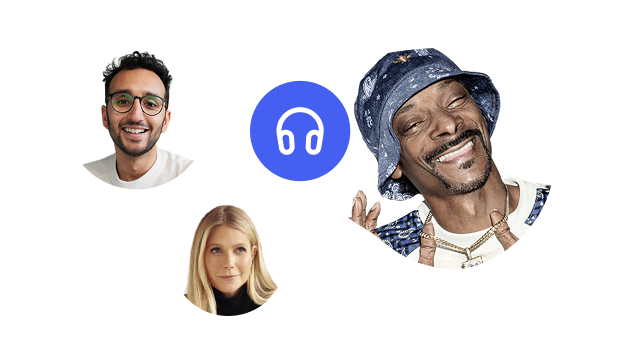Children with dyslexia face unique hurdles when learning to read, but supportive tools can turn frustration into progress. Using interactive technology, text to speech, and multi-sensory learning aids, tools can make reading both fun and effective. This article explores the best tools to help kids with dyslexia build literacy skills and confidence at their own pace.
Speechify
Speechify is a text to speech app that helps kids with dyslexia convert any written or digital text from readings and PDFs to web pages and classroom materials into natural, human-like audio. It supports over 1,000 voices in 60+ languages, allowing kids to listen while following highlighted text for improved word recognition. With its speed controls and OCR scanning feature, students can take a picture of a worksheet or homework and instantly have it read aloud at their own pace. By turning reading into an auditory experience, Speechify helps kids absorb content more comfortably and confidently.
Dragon NaturallySpeaking
Dragon NaturallySpeaking is a speech to text software that empowers kids with dyslexia to express themselves fluently without the stress of spelling or typing. By converting spoken words into written text with exceptional accuracy, Dragon allows students to complete homework, write essays, or take notes hands-free. It recognizes natural speech patterns and adapts over time to the user’s voice, improving accuracy the more it’s used. The program also includes voice commands for editing and formatting, helping kids independently navigate writing tasks.
Livescribe Smartpen
The Livescribe Smartpen combines handwriting and audio recording to support students who struggle with reading comprehension and note-taking. As kids write notes on special Livescribe paper, the pen records audio in sync with each written word. Later, touching a word on the page replays the exact moment it was recorded, allowing students to review lessons at their own pace. This is particularly helpful for children with dyslexia who have difficulty keeping up in class or recalling details.
Learning Ally
Learning Ally offers one of the largest libraries of human-narrated audiobooks designed for students with dyslexia and other learning disabilities. Its “VOICEtext” format highlights words on the screen as they’re read aloud, allowing kids to follow along visually while improving word recognition and fluency. The app includes thousands of titles, from school textbooks to children’s stories, making reading more accessible and enjoyable. Teachers and parents can monitor progress through built-in analytics.
Nessy
Nessy is a science-based literacy platform built around the principles of the Science of Reading, helping children with dyslexia master reading and spelling through structured, multisensory instruction. It uses animated games, colorful visuals, and humor to teach phonics, sight words, and fluency in a way that keeps kids motivated. Each lesson adapts to the learner’s progress, ensuring personalized pacing and reinforcement. Parents and teachers can track development through dashboards and reports.
Read&Write
Texthelp’s Read&Write for Education is a literacy and assistive technology suite that provides text to speech, word prediction, dictionaries, and highlighting tools to support reading and writing. It reads digital text aloud with synchronized highlighting, helping children with dyslexia improve focus and comprehension. The toolbar also offers picture dictionaries, vocabulary lists, and speech to text functionality for independent writing. Compatible with Google Docs, Microsoft Word, and web browsers, Read&Write integrates seamlessly into classroom learning environments. Its multisensory approach encourages independence and builds confidence in reading, spelling, and writing.
Reading Rockets
Reading Rockets is an online resource dedicated to helping parents, teachers, and specialists support children with dyslexia and other reading difficulties. The platform offers evidence-based reading strategies, instructional videos, and literacy-building activities that align with the Science of Reading framework. It provides practical guides on phonemic awareness, comprehension, and vocabulary development, along with book recommendations tailored for struggling readers.
Gemm Learning
Gemm Learning provides personalized online reading and learning programs for children with dyslexia, using adaptive software to strengthen reading fluency, comprehension, and cognitive skills. Its programs are based on neuroplasticity or the brain’s ability to form new connections and focus on improving auditory processing, memory, and attention. Students work through interactive lessons at their own pace, guided by certified learning coaches. Progress is continuously tracked, and lessons adjust automatically to each child’s performance.
Keeble Keyboard
Keeble is an iOS keyboard app designed for children and adults with dyslexia, dysgraphia, or motor challenges. It offers word prediction, automatic correction, and customizable fonts—including dyslexia-friendly options—to reduce spelling frustration. The app also supports color themes and key layouts that minimize visual distractions and improve readability. Its simple interface helps children focus on writing while learning correct spelling patterns. By combining accessibility and personalization, Keeble turns digital writing into a smoother, less stressful experience for dyslexic learners.
Franklin Speller
The Franklin Speller is a handheld electronic dictionary and spelling corrector that helps children with dyslexia improve spelling and vocabulary without the pressure of traditional dictionaries. Users can type in misspelled words, and the device suggests correct alternatives with definitions and examples. Many models also include phonetic spelling recognition, allowing students to find words based on how they sound, a critical feature for dyslexic learners. Compact and easy to use, the Franklin Speller builds confidence and independence by giving students instant, judgment-free spelling support wherever they go.
FAQ
How do color overlays help dyslexic readers?
Color overlays or background filters, available in apps like ClaroRead and Gemiini, reduce visual stress and letter movement, making text easier to track and focus on.
Can dyslexia apps read emails or web articles?
Yes, Speechify’s browser extension and mobile app can instantly read aloud web pages, emails, or PDFs, letting users multitask while listening.
What app supports dyslexic and ADHD users?
Many overlap. For example, Speechify’s audio playback, focus mode, and adjustable speed help both dyslexic and ADHD users sustain attention and absorb information efficiently.
Are dyslexia apps helpful for exam preparation?
Yes; by converting textbooks and notes into audio, apps like Speechify and NaturalReader allow students to study hands-free, boosting memory and review time.
How can parents support their child’s dyslexia using apps?
Parents can set daily reading goals, monitor progress, and encourage listening practice through Speechify or Lexy, turning reading into a positive, stress-free activity.
What are the best tools to help children with dyslexia learn to read?
Top tools to help children with dyslexia learn to read include Speechify for text to speech learning, Nessy for phonics instruction, and Learning Ally for human-narrated audiobooks that improve fluency and comprehension.
How does Speechify help kids with dyslexia?
Speechify turns books, worksheets, and digital text into lifelike spoken audio, helping children with dyslexia follow along visually while listening to improve recognition and confidence.
Can dyslexia apps improve reading fluency in children?
Yes, Speechify and Nessy both reinforce word recognition through multisensory engagement, combining sight, sound, and repetition to strengthen fluency and retention.
Can children with dyslexia use Speechify for schoolwork and homework?
Yes, Speechify can read textbooks, worksheets, and online assignments aloud, helping students complete reading tasks independently and without frustration.
Are there free or affordable dyslexia tools for kids?
Yes! For example, Speechify offers a free version for text to speech reading, while tools like OpenDyslexic and Reading Rockets provide no-cost resources for literacy support.





